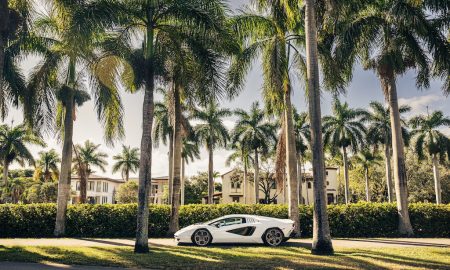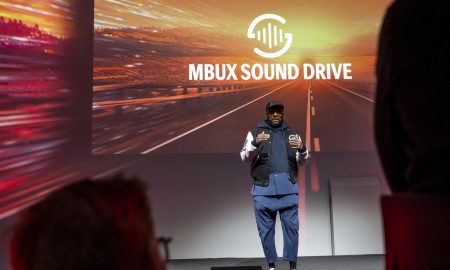LFA is back. The company best know to some for giving Benjamin Braddock (Dustin Hoffman) his special ride in The Graduate exited the U.S. in the mid-1990s; after selling just a few hundred cars a year, they deemed it uneconomical to both support the dealer network and to qualify cars under strict American and state standards. Given that there then were only about 35,000 Alfas on the road in all of North America, its no wonder the company decided to fold up its tent here.

Fast forward to now, after almost two decades of retooling and rejiggering, and we’re looking at a completely different situation. The first Alfa to repatriate was the stunning 8C a few years ago, which remains slightly more common than a unicorn, and now the 4C shows up, a snarly quick-darter of a car which looks like the Italian cousin of the English Lotus—very similar in size and shape to the Exige.
Stats enthusiasts, chew on these: the 4C has a traverse-mounted. a transverse-mounted (sideways) four-cylinder 1,742-cubic-inch mid-engine (engine mounted between the front and rear wheels) driving the rear wheels with 237 horses, spooled along with a turbocharger and laying down 258 pounds of torque. Not a lot of ponies or twist compared to the typical ride in this column but, when bolted into a 2,465-pound car, it can move with amazing alacrity. Aside from being fun, it’s like a Back To The Future ride as it has the feel of a 1960s sports car, which the designers no doubt intended to evoke— even the engine cover has no gas strut to hold it up; one simply moves a metal rod into place for that support, much like the imported cars of five decades past of course. There are nods to the new millennium, with power windows, air conditioning and a six-speed paddle shifter, but it’s about as an unadorned, pure motoring experience that you can buy today.
Yet, it’s not so Spartan as to avoid options on the order form, though it’s not a lengthy list, and it still provides relatively-inexpensive motoring. The most basic 4C Coupe starts at $53,900 while the Launch Edition has a base of $68,400. The newer 4C Spider (targa top) starts at $63,900.
So why profile an “inexpensive” (for these pages) sports car like the 4C? It’s a ton of fun for very little money, that’s why. In computer parlance, WYSIWYG (pronounced “wissy-wig”), as in What You See definitely is What You Get. No pretender here, the 4C is purpose-built and is definitely the perfect driver- machine interface for weekend fun without tying up a small fortune for your Sunday sled.
But the 4C is no slouch in the electronics department either, thanks to its DNA. In Alfa-speak, no need to get your double-helix in a twist, as those three letters stand for the four driving modes—Dynamic, Neutral, All-Weather and Race (I guess that DNAR wasn’t catchy enough). Adjustments to the engine response, transmission shift times and suspension allow the driver to choose the right setting, taking into account the roadway, weather and, presumably mood. Being the sort who starts with the “R” setting, I was glad to see that the electronic interveners still were still there, just less obtrusively, and only showing up when the car was pushed to its limits. Honest, officer, I’m just doing my job.
The 4C is a great blend of looks, sound, feel and performance, an eminently drivable 1960s-era throwback in some ways, but car far more commodious, reliable and agile than its predecessors. Welcome back, Alfa—we missed you.
Those who are familiar with the Marque know that the “Speed” versions of Bentley’s cars are the higher-performance variants. The Speed moniker has been around since the Speed Sixes, which won so many races (including Le Mans) way back when. Bentley still insists that its Speed versions have more get-up and oomph than their non-Speed relatives, and should not be relegated to being some boulevardiers which look flashy, but have no go to match all of the show.
I have to say, I was not expecting the Mulsanne to have a Speed edition, and was pleasantly surprised to be offered one for some real-world testing. The Mulsanne (named for the fabled straightaway at the Le Mans race track which leads to the French village of that name) is at the pinnacle of Bentley luxury, riding atop a group of models starting with the GTs (two-door hardtops and convertibles) and then the Flying Spur (the four-door sedan), all of which have base-prices which range from about $190,000 for the standard cars, to the mid- $200,000s for their Speed versions. (The soon-to-arrive Bentayga will add an SUV to the family.) In contrast, the Mulsanne starts at more than $300,000 and, depending upon how wild and crazy you get with the option order sheet, you will be knocking on the door of $400,000 – and possibly blowing right through it —when you reach the bottom line.
The Speed version (about $33,000 more) differs from the standard Mulsanne in several ways. First and foremost for the serious driver is that the Speed up- grade brings with it more horsepower and torque to the V8 twin-turbo moto— while the 530 horsepower is “adequate” (as its famous competitor is wont to say), its 811 pounds of torque at 1,750 RPM looks like a number which escaped from a tractor pull. That’s major twist, and it’s well needed in motivating a luxury car weighing in at so close to three tons that, without any people or luggage aboard, a KFC Family Meal bucket on the front seat likely would put it over the 6,000-pound mark. Then again, if you want your chicken and you want it now, you’ll appreciate the under-five-second 0 to 60 times in a car with such heft.
So, is it a luxury car that’s really fast, or a fast car that’s really luxurious? In a word, yes. And, who asks such questions when they actually mean pretty much the same thing? But I will say that the luxury accoutrements abound in this car—there’s enough leather here to start a small boutique; on the seats, of course, but also on the door panels and everywhere else, except where exquisite wood trim is present. One of my favorite options was the power-operated rear seat tray table—one for each rear passenger—each of which could open further to reveal two iPad screens and built-in keyboards. A close second was the refrigerated (when under way) bottle cooler, located between the two rear seatbacks, which could hold two champagne bottles, plus three bespoke crystal champagne flutes (to provide four would imply that the driver would imbibe), the compartment separated from the rear seat by a power-operated frosted glass door, which drops down at the touch of a button. Add special seat and panel stitching, a higher-end entertainment system, super deep-pile carpets and some other special items and the total came to . . . (cue the champagne) . . . $410,907 for “my” car.
My typical time with these special vehicles I review is about one week. During that time, I try to get in a variety of driving experiences. With the Bentley Mulsanne Speed, we were lucky enough to include a multi-day Newport Beach trip, where the car fit in but also stood out, as it is not often seen on the roads, even in the toniest of areas. Perhaps that’s because the Mulsanne’s price puts it in the upper stratosphere of luxury cars, and the Speed option adds to that exclusivity. It’s a wonderful road car, an even better freeway car, and it is no slouch in the performance department. It’s the perfect car for the family person who needs to shepherd one or more family members around town (or cross-country), but likes to push the car when out alone, no matter what the road. This is one elegant grand tourer, and my time with this beauty ended way too soon.

























